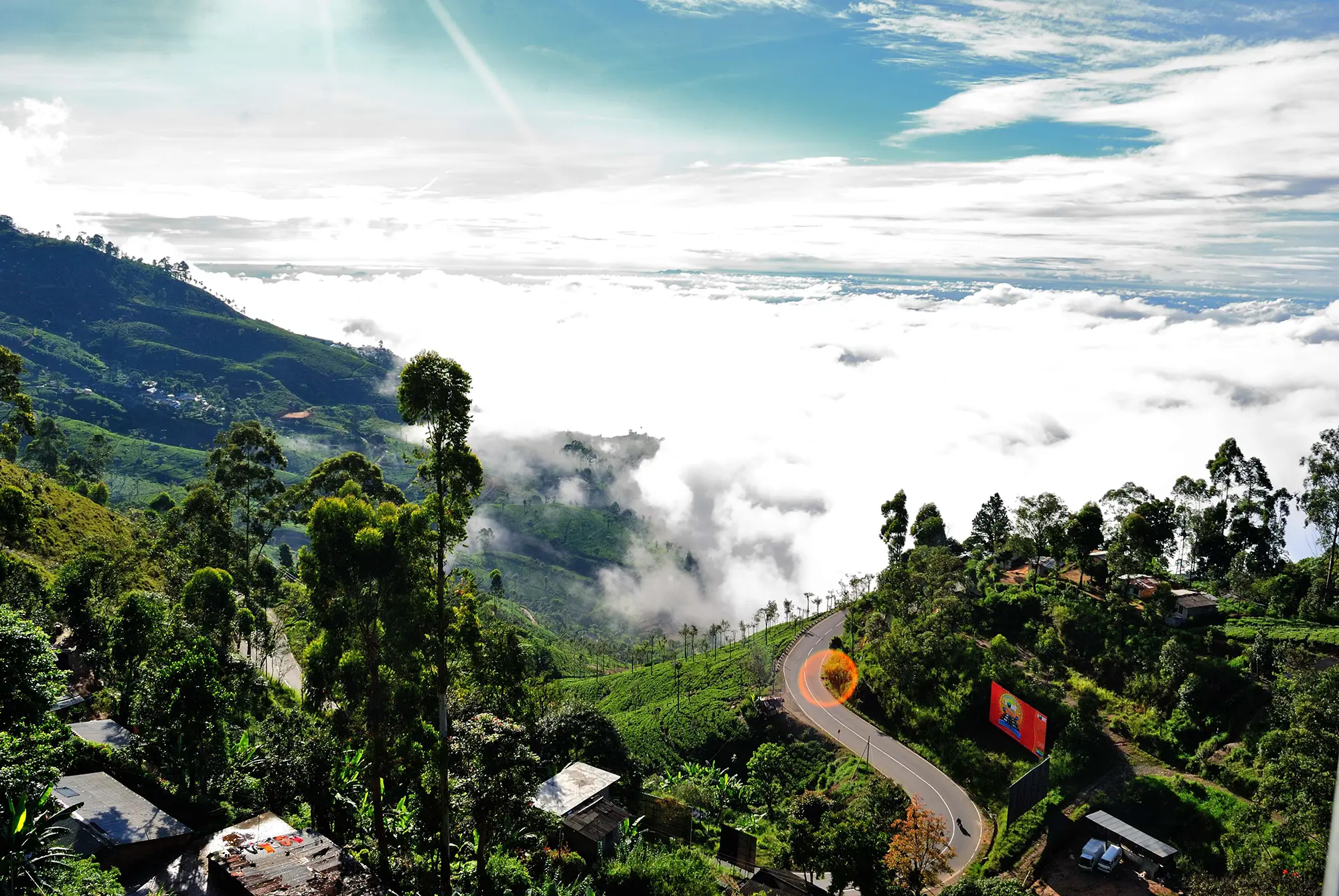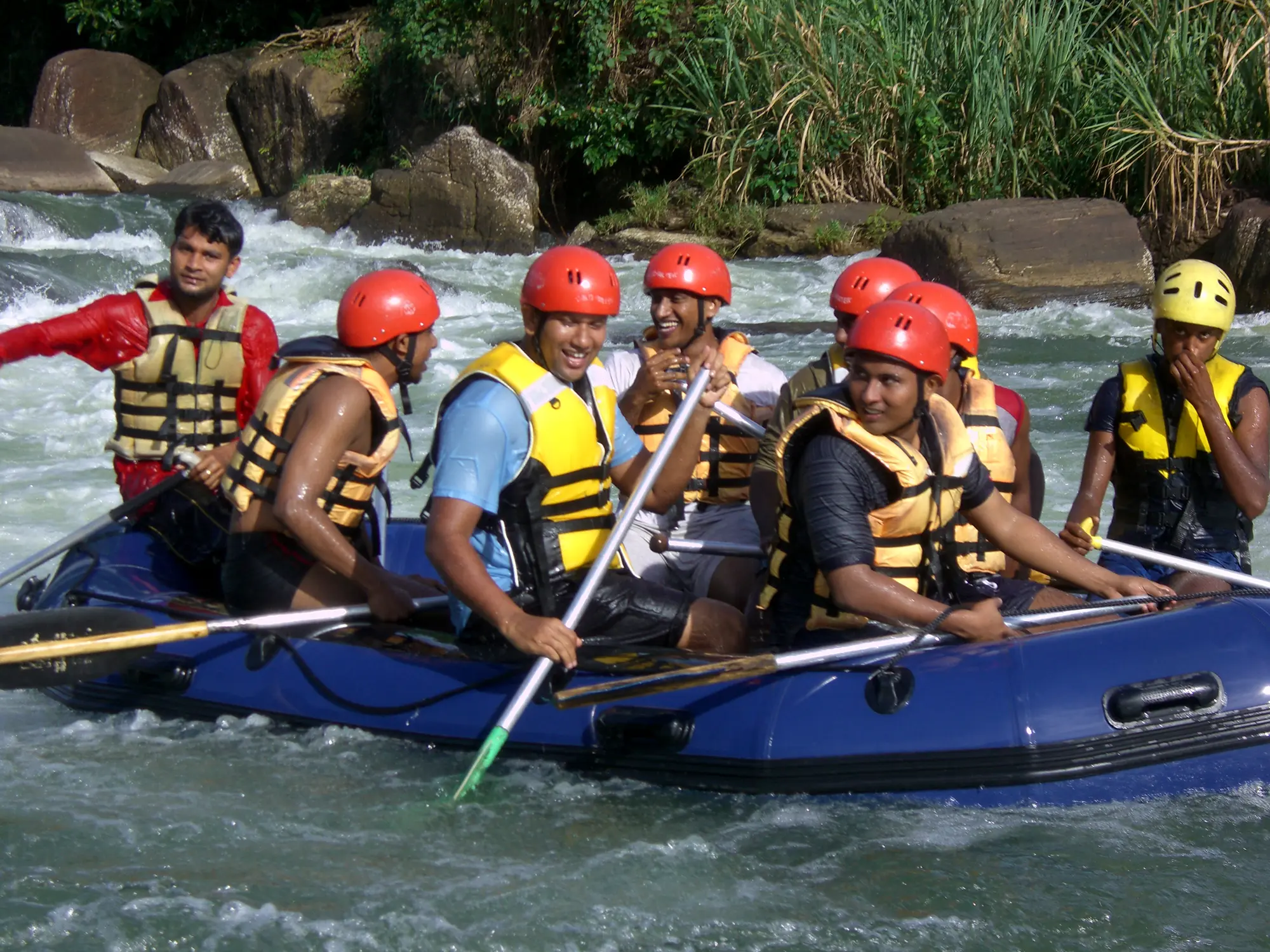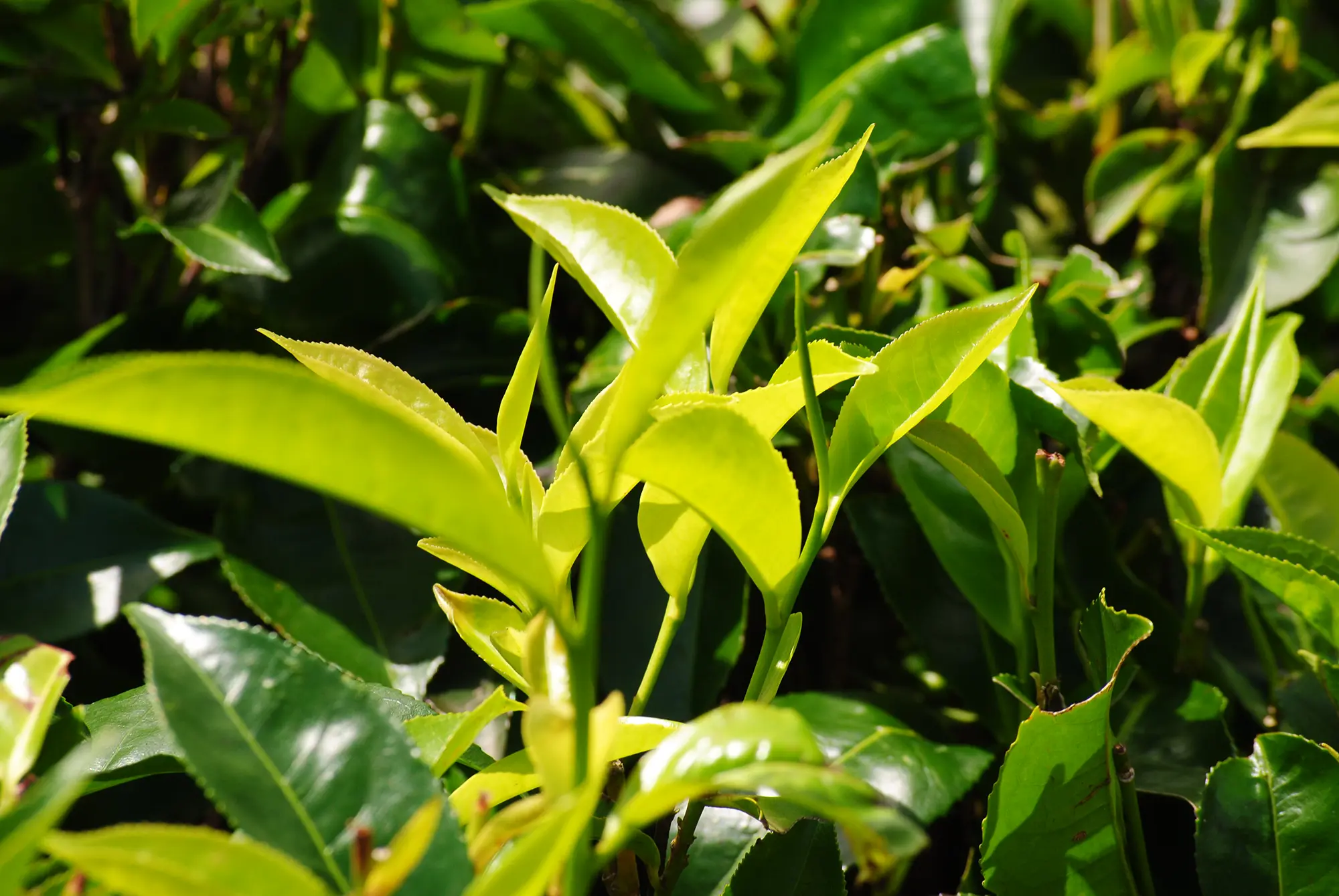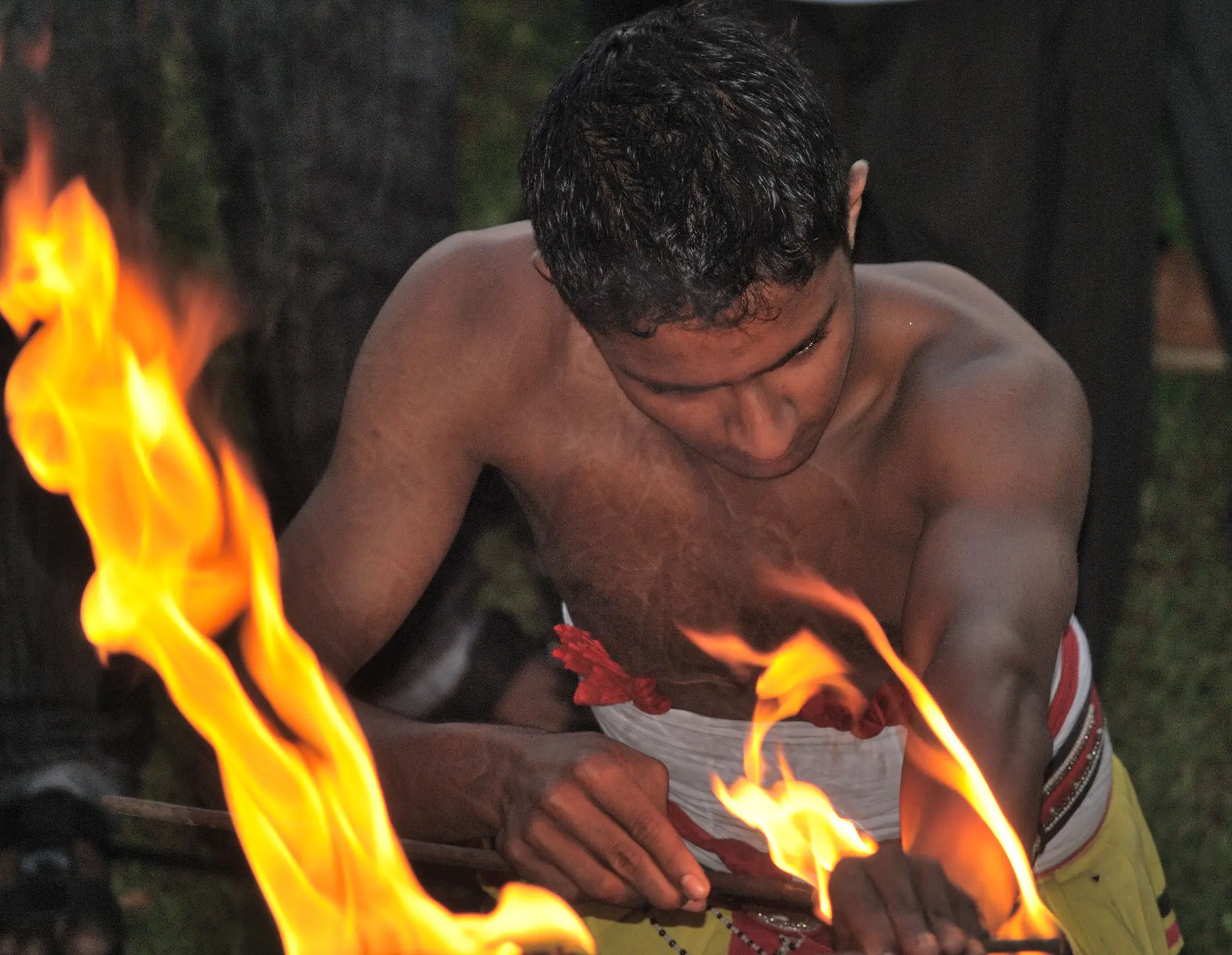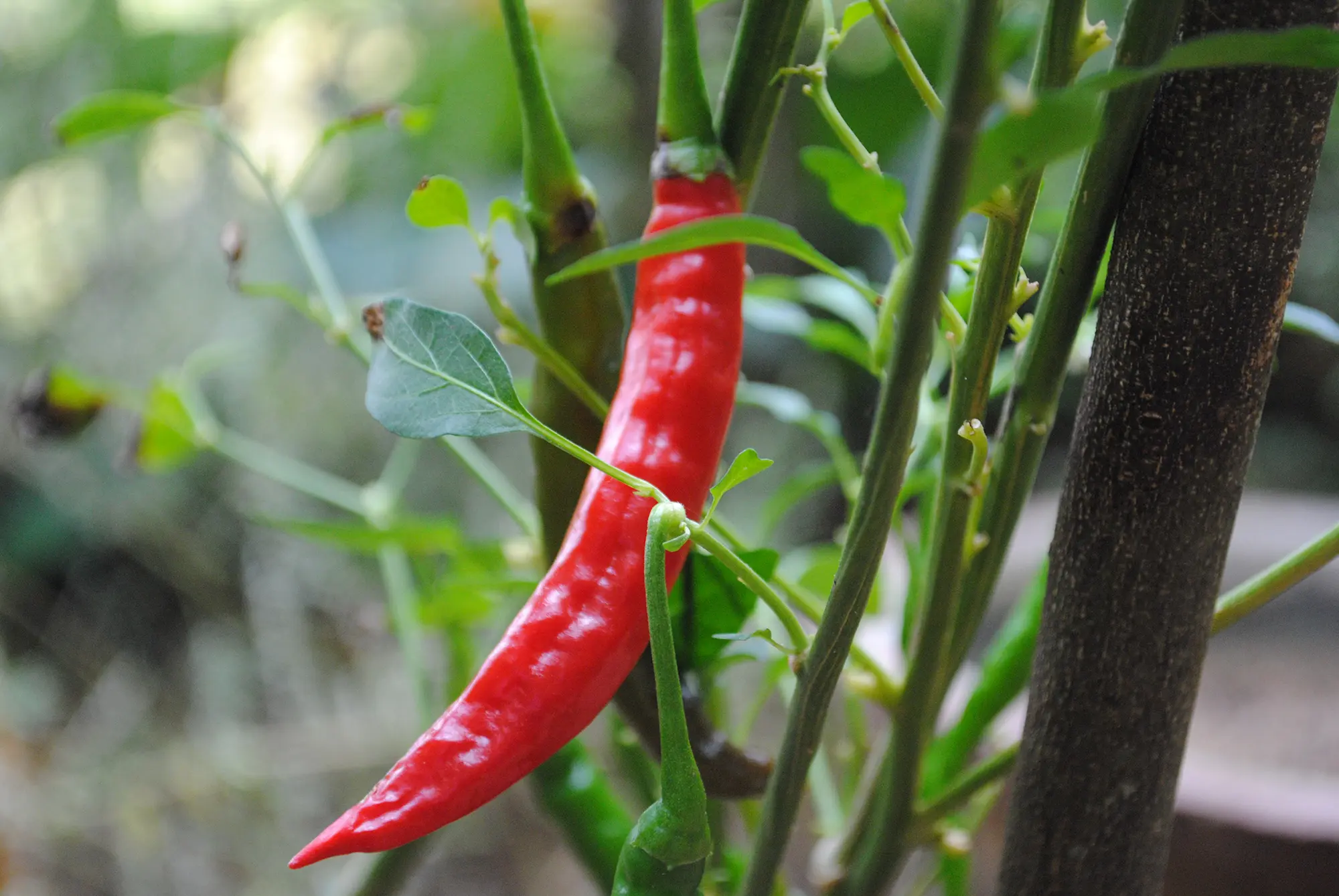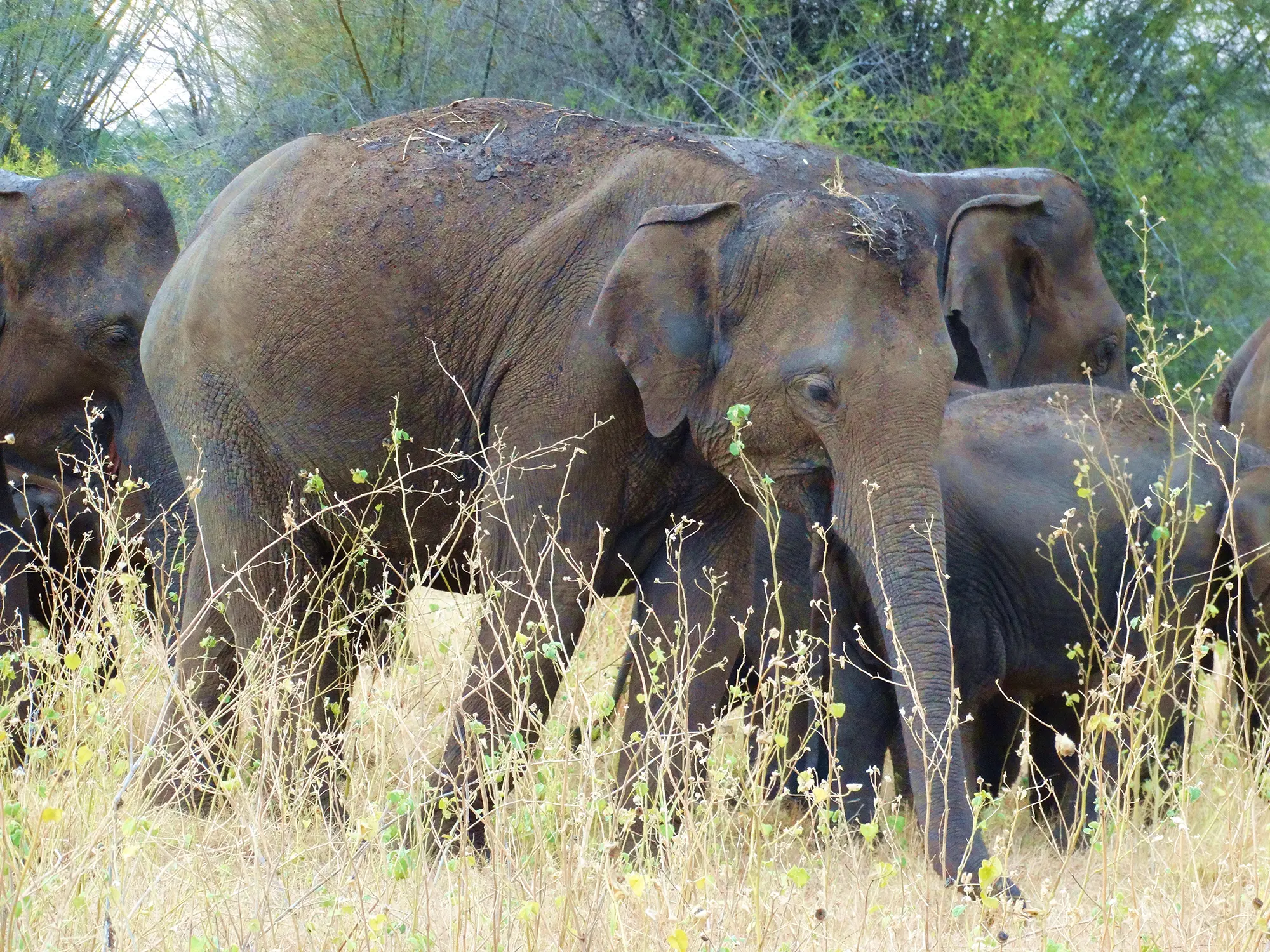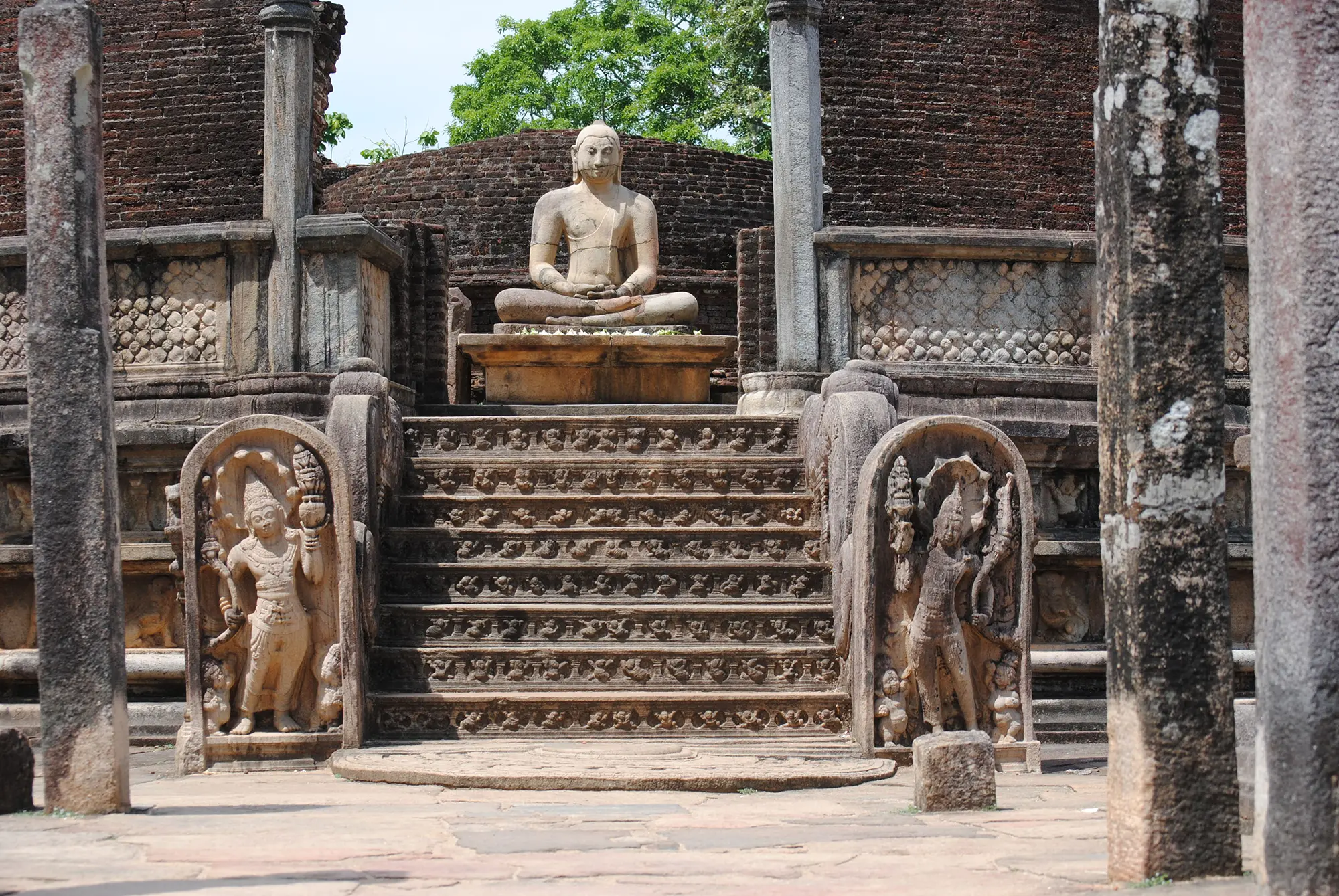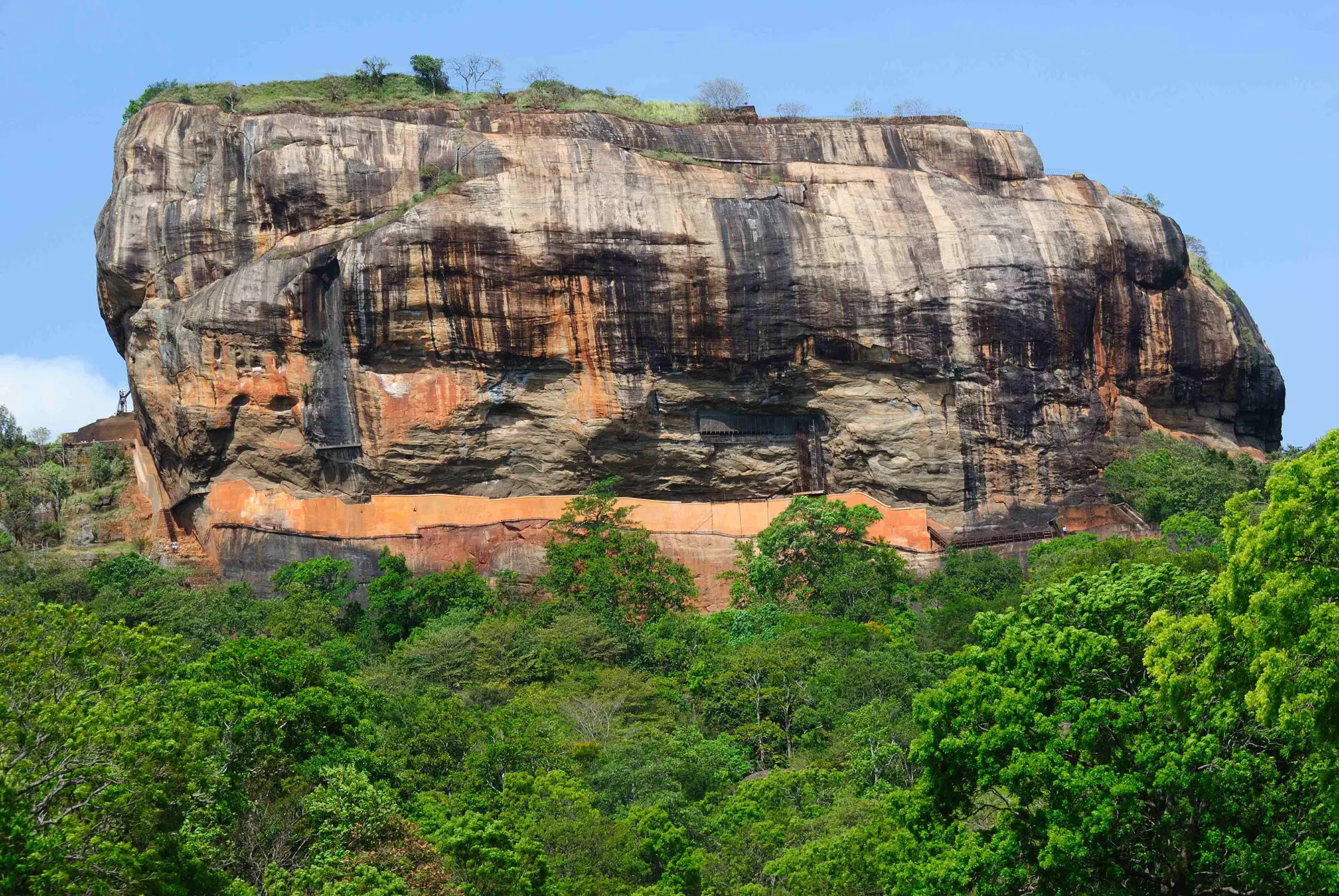06 Days / 05 Nights
Itinerary In Brief
Kelani River / Nuwara Elliya
Nuwara Elliya / Kandy
Kandy
Spice Garden / Dambulla
Minneria National Park / Polonnaruwa
Sigiriya / Pinnawala
Day 1 Kelani River / Nuwara Elliya
Kelani River is one of the longest rivers on the island. It offers not only the possibility of sailing in its mouth, but is also one of the tourist attractions for people who want to experience unforgettable moments during a pontoon rafting down the river. This is an experience worth the risk, because during the rafting you will encounter at least 3 crazy steps (class III) and an experienced skipper will guide the boat according to all the rules of river navigation. The pontoons on which the participants of the event sail are unsinkable, according to the organizer, and can accommodate from 4 to 12 people, depending on demand. Before the cruise, mandatory health and safety training and the possibility of changing into swimsuits in the changing room. After the cruise, which lasts from 30 minutes to an hour depending on the river current (optionally the whole day), you can take a shower and eat well in a restaurant belonging to one of the most famous acupuncturists and see his collection of Rolls Royces. Travelling through the highlands and valleys is a time to admire the spectacular views of the tropical interior.
At the end of the day we will go to Nuwara Elliya, one of the most beautiful lands on the island. There are countless tea fields here, as well as cascading vegetable gardens, where Italian food predominates. Nuwara Elliya is not only tea fields, tea factories, countless stalls with tea of all quality and varieties, but also waterfalls in which the natives bathe. Nuwara Elliya is both a place – a land on an island and the name of a small city considered to be the capital of this land. There are old-fashioned hotels from the era of Queen Victoria, bars offering drinks by the measure but without snacks, the famous Baal Bazaar seems to resist change. Here you can buy the best fakes and originals of clothing. Victoria Park is a great place for a walk for plant lovers and a great place for families with children to have fun. The park on Gregory’s Lake is equally popular. Here you can ride a pony, ride a bicycle or a water bike. Eat Sri Lankan delicacies or hunt for Italian pizza. A visit to the Gayathri temple, the only one in the world where there are two statues with five faces each. It is also the mauseleum of the guru, the founder. Shiva’s 108 penises are quite impressive.
Day 2 Nuwara Elliya / Kandy
After breakfast, we visit the Nuwara Elliya area along the way, stopping at the largest waterfall in Ceylon (apart from other larger ones, there are 11 on the island) for a short relaxation, coffee or snack. There are tea plantations all around, and locals bathe in the fresh waters of the waterfall. You can join in the fun. The waterfall is over 700 meters high. One of the best teas in the world grows in this area – Ceylon tea grown above 1,200 meters above sea level is considered the best drink of its kind. Unblended “high grown” tea can be purchased in one of over 1,600 factories located on the island. The type preferred by Poles is BOP. Blends, including monk’s secret and stimulating or slimming teas, are becoming more and more popular. The secrets of green and black tea production, segregation methods and many different ways of cleaning the semi-finished product are astonishing.
We will end this day in Kandy, the last historical capital of Kandy, which fell to the regime of Sri Wickaramasingha I in 1815. The takeover of Kandy took place with the participation of the British commanding an army composed mainly of Hindu soldiers. However, there were many times when power was taken over under the guise of local notables. Today, in the square in front of Sri Dalada Maligawe, which we plan to visit, there is a monument to a monk who will take down the British flag while signing documents, saying that until all signatures are placed on the documents, Sri Lanka belongs to the Lankans. The temple complex is easy to visit as it is located on a small area. Appropriate clothing is required in all temples. Shoes are not allowed, but socks are not a problem. While staying in Kandy and visiting the Sri Dalada Maligawe temple, you can also see other temples, including those dedicated to Bambara, the god of farmers, Natta, one of the patron saints of Kandy, Sri Pattini, the goddess, patron of Kandy, the sacred and miraculous boo tree. In the evening, there will be dance shows, walking on hot coals, fire swallowing, juggling and acrobatics.
Day 3 Kandy
When visiting Kandy, it’s worth checking out the local shops. Not only branded clothing but also local products are worth recommending.
However, Kandy is also an artistic center, called the cultural capital of Sri Lanka. There are countless jewelry stores here selling products using all kinds of precious metals. However, gold on the island is not expensive. The stones embedded in it give the price to the product. The most beautiful sapphires come from Ceylon, where the largest number of gemstones per cubic meter of output is found. Sapphires, rubies, amethysts, topaz, aquamarines, peridotites, garnets are just some of the gems mined here.
In Kandy there are also centers for the production and sale of batiks – fabrics specially dyed using a special method of repeated application of wax. This method was brought to the island by the Dutch during colonial times. Not only will you be able to admire the artists’ craftsmanship, but you will also be able to purchase ready-made products.
Kandy is also a place where there are carving workshops that produce not only wooden products for the needs of tourists (souvenirs, statuettes), but also offer a whole range of utility products made of tropical wood species.
After shopping, we will go to the Udawatta Kele Natural Sanctuary for light trekking. Uda Watta Kele is situated as if hanging over the royal palace in Kandy and is a haven for many species of birds, reptiles and mammals. You can see macaques, potbellied monkeys and gray langers, as well as lots of colorful butterflies. The undoubted attraction of the park are the huge lianas, including snake-like ones like from Tarzan movies. Udawattakele is also home to lizards, including multi-colored chameleons. The climate of the sanctuary is conducive to walking.
Day 4 Spice Garden / Dambulla
The program includes visiting gardens with spices and herbs. These are special places licensed by authorized government agencies for the production of Ayurvedic medicines, therapeutic oils, cosmetics and spices. On site, you can see how the proverbial pepper and vanilla grow, observe the production of cinnamon, and the methods of obtaining todi from coconut palms. A short culinary lesson will show us the difference between curry and curry, and we will also see how ropes and strings are made from coconut shells. At the end of the visit to the gardens, a short Ayurvedic massage. It will be possible to purchase herbs, herbs and spices. You can see the picking of coconuts, the extraction of coconut wine, the production of coconut rope and roofing made of coconut leaves. Cinnamon production is a profitable business, Sri Lanka covers 90% of the world’s demand for this spice.
After visiting the gardens, we will go towards Dambulla, where the “Golden Temple” of Rangiri is located. In five caves you can admire statues of Buddhas from different periods, because the temple was founded in the 1st century BC during the reign of King Valagambahu I, who found shelter here during his fourteen-year exile from Anuradhapura. The statues of Hindu gods and Sri Lankan kings are a change compared to the presence of 150 Buddha statues in various mudras. The wall paintings depict images of Buddha as well as scenes from his life. It is believed that Dambulla is the place where there are the most Buddha paintings taken in one place. Rangiri Temple is included in the UNESCO World Heritage List.
Day 5 Minneria National Park / Polonnaruwa
After breakfast, departure to the Minneria national park.
Minneria National park was established in 1992. It is home to the world’s largest herds of Asian elephants and was recognized as one of the most beautiful parks in the world by the American station CNN in 2014. A jeep trip around this park is a real pleasure and a great treat for those who like to photograph wildlife.
In the afternoon, we will go to Polonnaruwa – the capital of Sri Lanka from the period between the 10th and 12th centuries AD. On the way, we will visit a sculpture workshop, where master craftsmen make wooden sculptures of local gods, Buddha statues, furniture and everyday objects. It is worth watching the work of the sculptors. Masks used in Sri Lanka in magical ceremonies, for treating diseases, repelling evil forces and in theatrical arts are also made here.
The ruins of Polonnaruwa are a fascinating example of one of the most developed aquatic civilizations in the world. We will see the ruins of the seven-story palace of King Parakramabahu, the former office of the council of ministers, baths and royal pools, the temple of Shiva’s penis, the sacred square with the temples of Tupa Rama, Hatadage, Atadage, Vatadage, Nissnkamala Mandapa, Gal Pota (stone book) and a temple of unknown origin believed to be as a gift from another nation. we will go to Gal Vihara, where there are Buddha statuettes carved in rock, considered to be the most beautiful on the island. Polonnaruwa is on the UNESCO World Heritage List.
Day 6 Sigiriya / Pinnawala
After breakfast, we will go to Sigiriya, a monolith over 200 meters high, where King Kassiapa built a fortress in the 5th century AD. The height to be overcome is approximately 200 vertical meters, mainly along stairs and paths. The rock has been inhabited for thousands of years, but the most visible result of human activity are the ruins of the city from the 5th century AD, along with a preserved and still well-functioning hydraulic system, including spa and massage salons, swimming pools, fountains, artificial streams, cascade gardens and ponds. From the top of the mountain there is a view of the nearby jungle, rice fields, fountain gardens and swimming pools that we passed earlier, and you can see a giant statue of Buddha in mudra – come to me, don’t be afraid. On the way, we pass caves with the remains of frescoes from the reign of King Kassiapa. The lion’s platform, which was once defended by the open mouth of the colossal lion built there (now only its paws and claws remain), opens the entrance to the very top. The ascent and descent will take approximately 2.5-3 hours, but people who are afraid of heights may have problems reaching the very top.
Then we will go to the Elephant Orphanage in Pinnawala. It is home to the world’s largest herd of captive Asian elephants, Elefanus maximus maximus. Currently, there are about 80 pieces. Depending on the time of day when we reach the orphanage, we will be able to watch young elephants being fed with a bottle of milk, as well as try to feed the baby ourselves (optional, approx. USD 2). Nearby there is a hospital for sick elephants, as well as a large clearing where these stately mammals receive countless amounts of vegetarian food every day. Great photos with elephants guaranteed. There is also a special stand in the orphanage where pregnant elephants stand waiting for treats from tourists. Platters of fresh fruit specially prepared by the orphanage staff can be purchased for approximately USD 2 and you can feed a pregnant elephant by putting the fruit directly into her mouth. After breakfast, the elephants go to the stream to play, wash and quench their great thirst with clean water. We will follow them, but on the way we will visit an unusual factory of utility products made from elephant dung. The sight of elephants bathing in the river against the background of coconut palms and lush vegetation is enchanting.
In the Pinnawela area you can also arrange an elephant back safari (optional).
Transfer to the hotel. End of service.
Need Help?
Have questions about our tours or need help deciding the best fit for you? We're here to assist! Feel free to reach out anytime for personalized guidance and recommendations. Your perfect adventure awaits – let's make it happen together!

